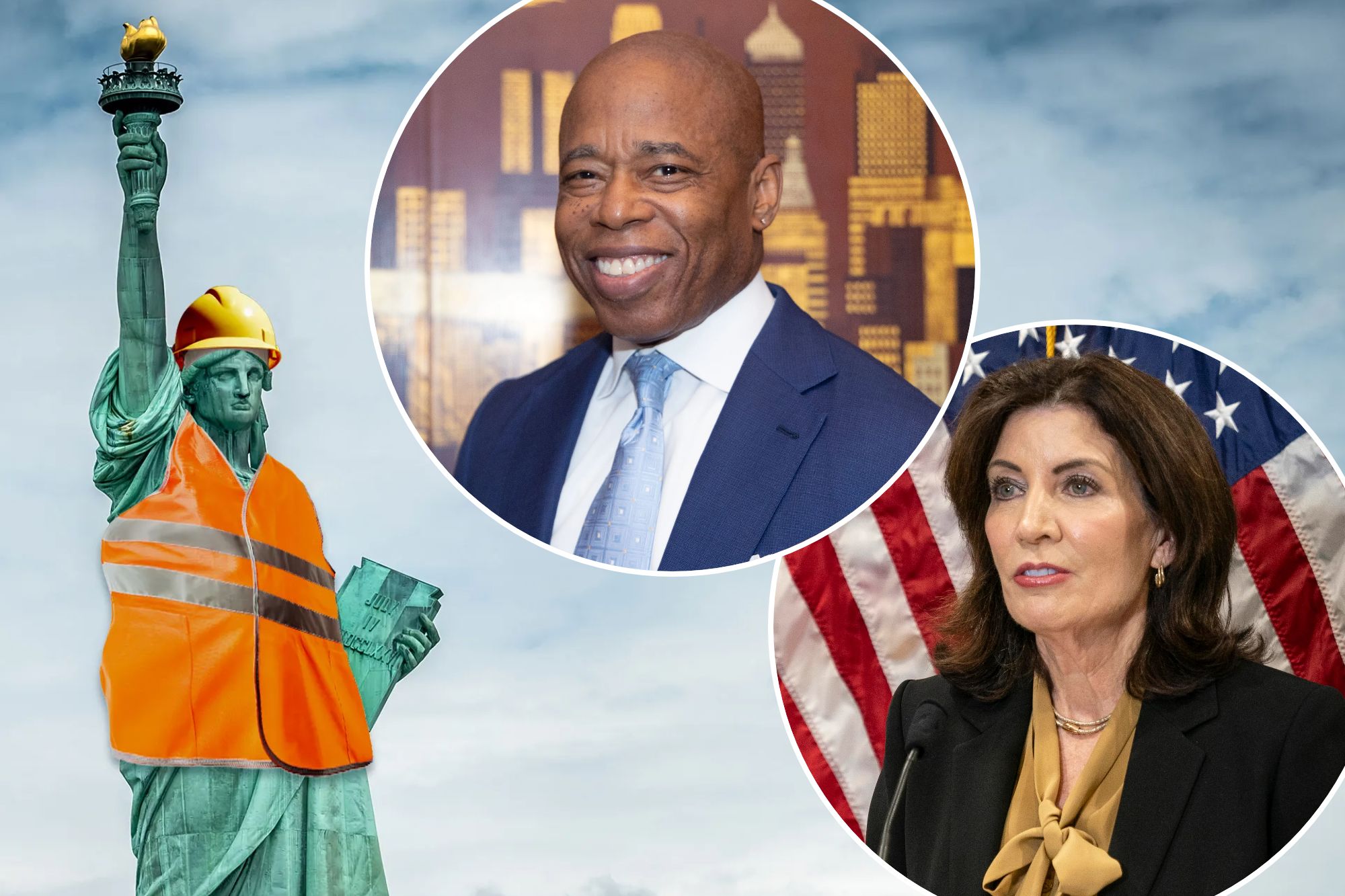
Back in March, Mayor Eric Adams celebrated record New York City employment. At first glance, there’s much to be pleased about. In 2023, New York City’s private employment stood at a record, surpassing the 2019 pre-pandemic peak. Total employment, which includes government, also set a record, even though the city has recently shed payroll employees, compared with levels under Adams’ predecessor, Bill de Blasio.
But a deeper look at changes in private employment from 2019 to 2023 raises some disquieting questions. As I note in a recent brief https://nypost.com/2024/05/04/opinion/more-new-yorkers-are-working-than-ever/ for the Manhattan Institute, there’s good news, for sure. Wall Street is doing well, and tech services are growing fast, adding high-paying jobs. That job growth will help sustain the demand for office space, despite the lingering work-from-homers.
However, those jobs are not accessible to all New Yorkers. In sectors that employ the roughly three in five New Yorkers who are not college graduates, the picture is more concerning.
Most of the sectors that, prior to 2019, were adding jobs for non-college graduates are now declining – including construction, retail trade, restaurants, and hotels. Jobs being added in health care and social assistance are nominally private but largely government funded. Which means this type of job is likely to be reined in by budget cuts.
Some health-care employment growth is in hospitals and medical offices, reflecting an aging population. However, a strikingly large increase — 59,000 jobs between 2019 and 2023 — was in home health care, mostly paid for by Medicaid. By 2023, New York City had 267,000 home health care jobs. That was 16.4% of the nation’s total — for a city with just 2.7% of the nation’s population.
Home health care is a valuable service, enabling disabled people, mostly elderly, to avoid nursing homes. A recent report found, however, that New York State is unusually generous in allowing people to get state-funded home care, and in the hours of service each recipient is provided.
This might be viewed by some as an unusually clever way to secure federal aid. But New York’s governor, Kathy Hochul, and her budget director say the state’s ever-growing 50% match is “unsustainable.” State officials characterize its home care program as “riddled with fraud.”
The other big growth sector is social assistance, where spending has ramped up due to the city’s migrant influx. That led to a gain of 39,000 jobs from 2019 to 2023. That’s mostly city funds, and Adams has looked for ways to reduce the burden. His reported intention to appoint an aggressive litigator as the city’s new top lawyer may also indicate a renewed effort to reduce the costly legal mandates that drive migrant spending.
New York City needs to restore employment growth in sectors that bring income into the city and generate tax revenue, rather than consuming it. That would provide opportunity for New Yorkers at all levels of education and support the quality public services they need.
Unfortunately, the city’s economy can no longer coast on the jobs generated by its powerhouse central business districts. Despite private-sector job growth, those areas have a smaller daytime population of in-person workers and visitors, and less economic activity than before the pandemic. Rather, new economic activity needs to be generated in ways that succeed despite this environment of high taxes, restrictive zoning, and business regulations that are hostile to private investment.
Luckily, both Hochul and Adams seem to understand this and have pushed for better policies from resistant state legislators and city council members. The latest state budget includes small steps to contain Medicaid home-care spending.
However, the centerpiece housing deal is a mixed bag. Welcome changes reinstate tax incentives for construction of new rental apartment buildings, encourage conversion of unneeded office space to housing, and relax a cap on the cost of apartment renovations in rent-regulated buildings. However, these are encumbered with so many regulatory conditions that their effectiveness in delivering much-needed construction jobs will be modest.
Adams, for his part, is proposing zoning changes that ease restrictions on where small businesses can locate and allow more housing to be built throughout the city. These state and city actions will encourage private business investment, and thus jobs, but much remains to be done.
For example, the state retains onerous laws affecting new building activity, including environmental-review requirements for local zoning changes. The state has also enacted new, dubious rent caps on previously uncontrolled apartments as part of its recent housing deal. The city maintains unnecessary restrictions on retail-store size and impractical parking requirements. And an ill-considered zoning amendment under de Blasio stifles investment in new hotels.
Sound fiscal guardianship at both the local and state levels means adding private-sector jobs in the city. That imperative has been neglected for years and only rediscovered as empty office buildings have exposed the weaknesses of policies on taxes, spending, and business regulation. The state and city’s fractious and free-spending politics have taken a welcome turn towards fiscal and regulatory reform. Here’s hoping they drive the much-needed job growth that will keep New York going strong.
Eric Kober is a senior fellow at the Manhattan Institute.














